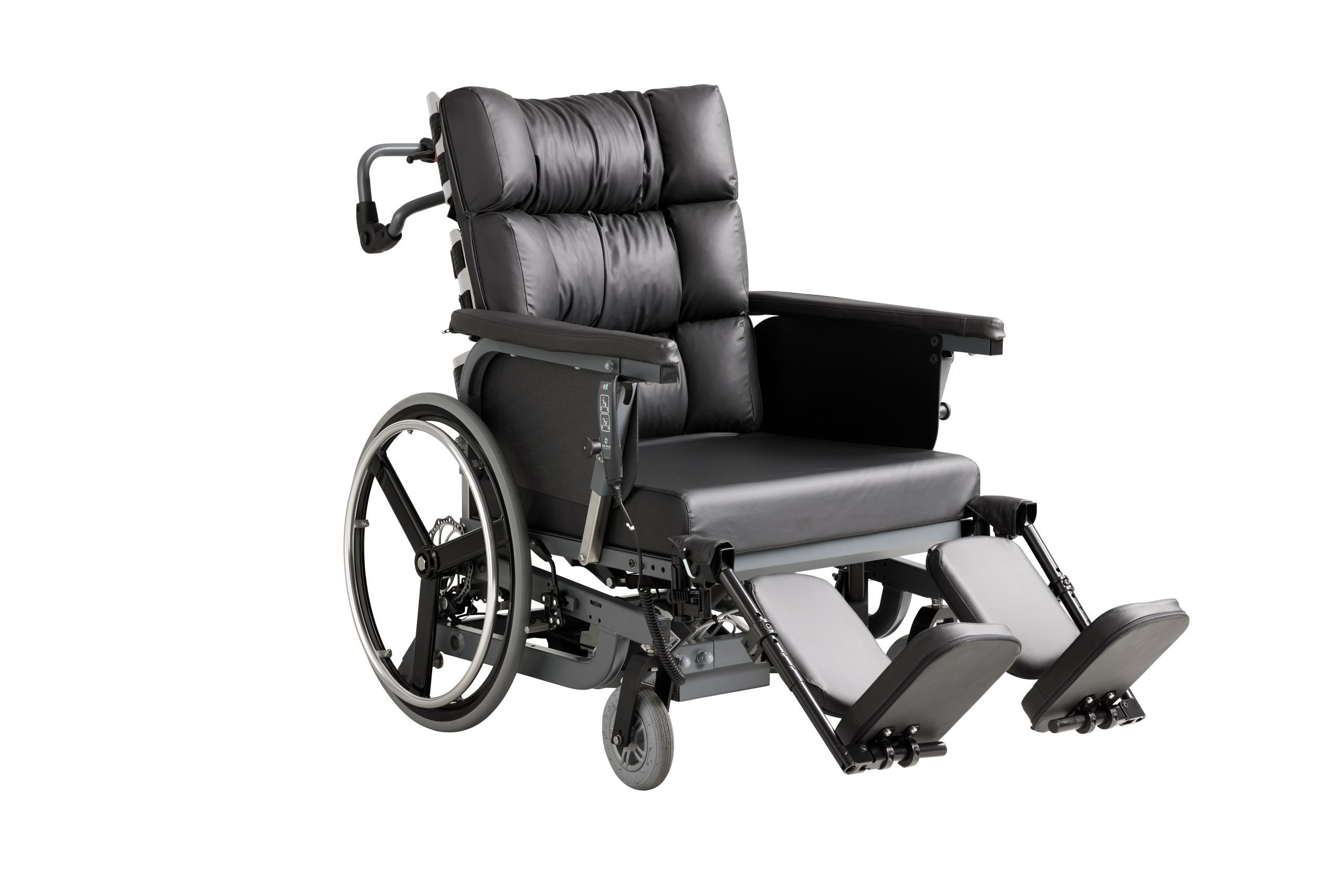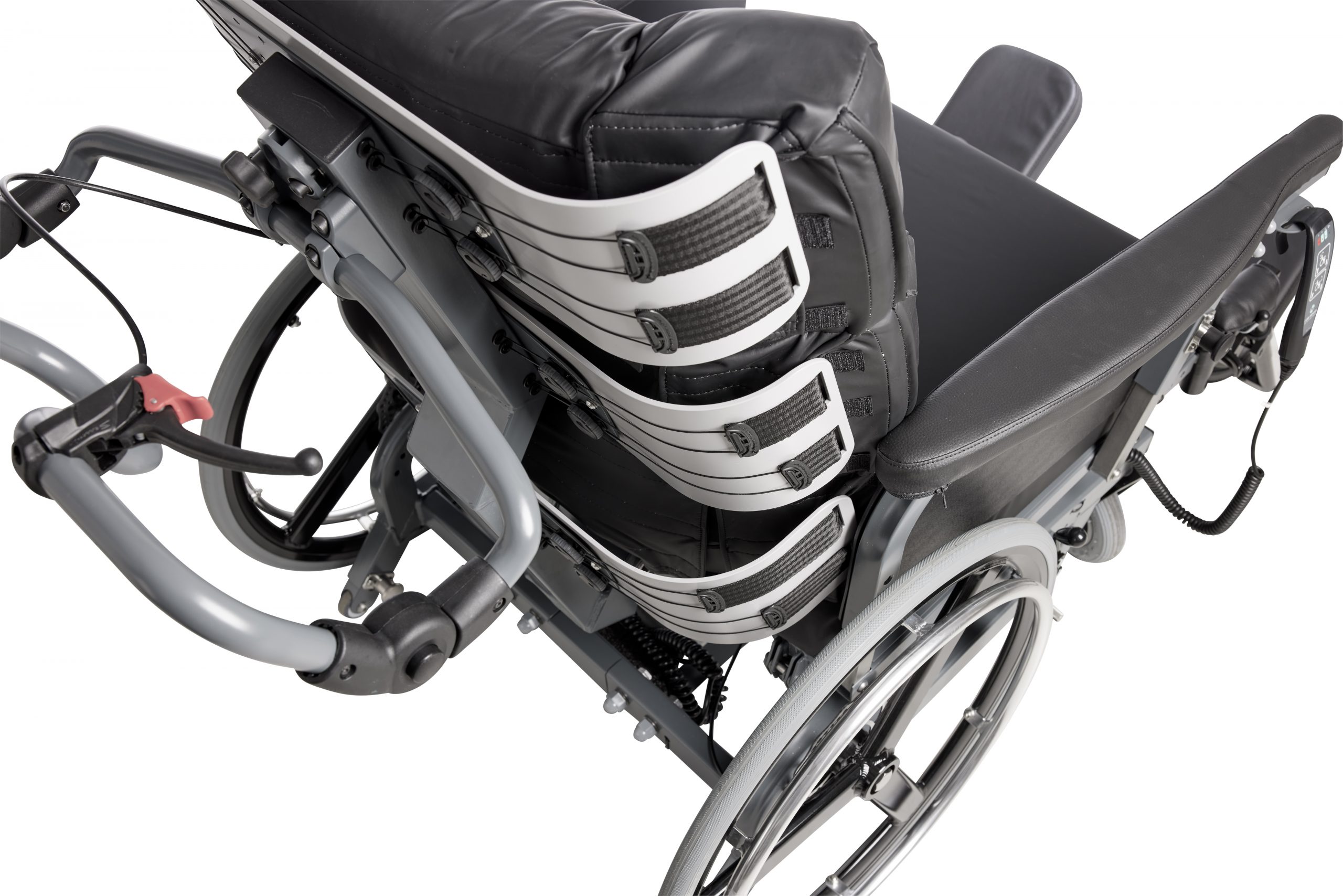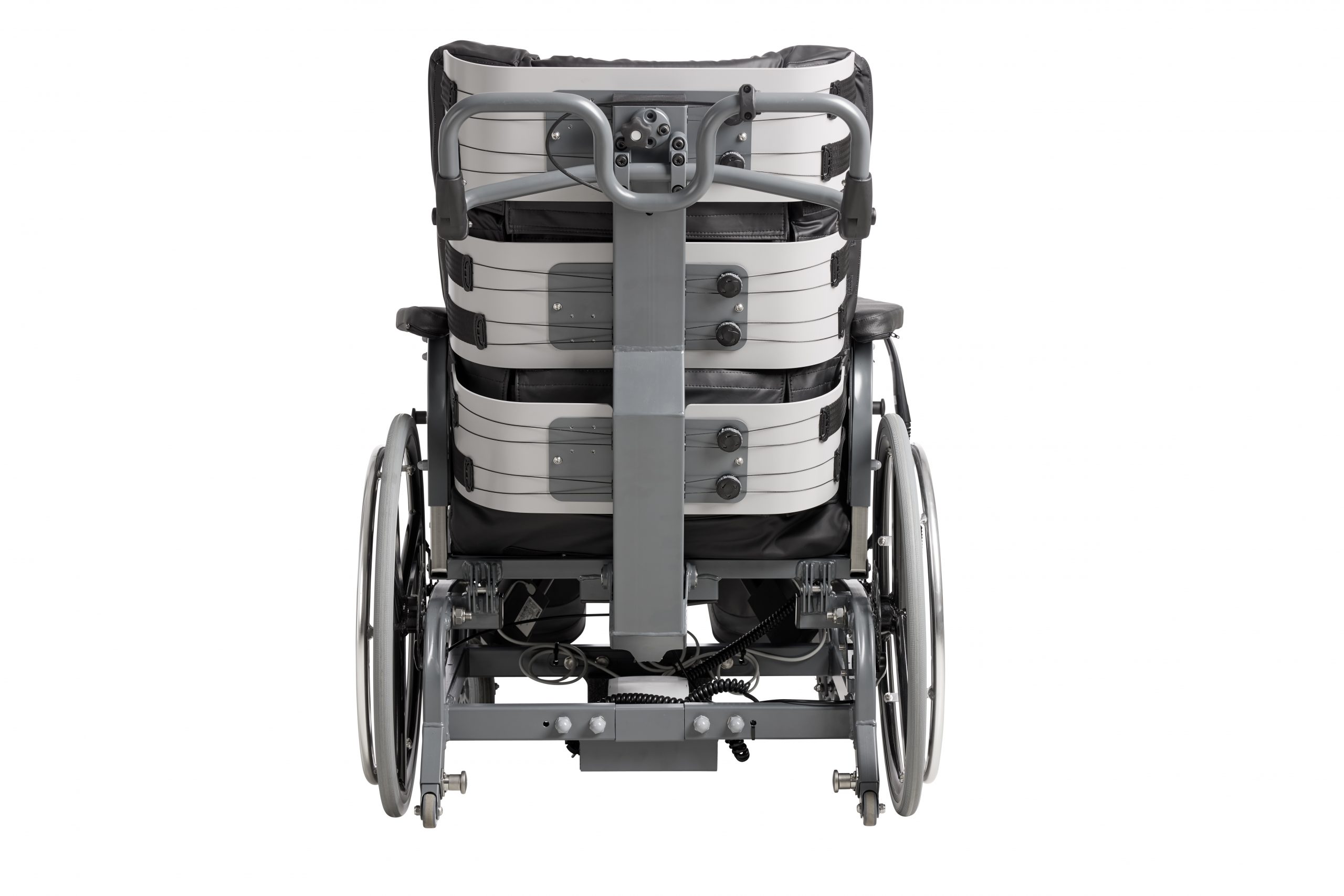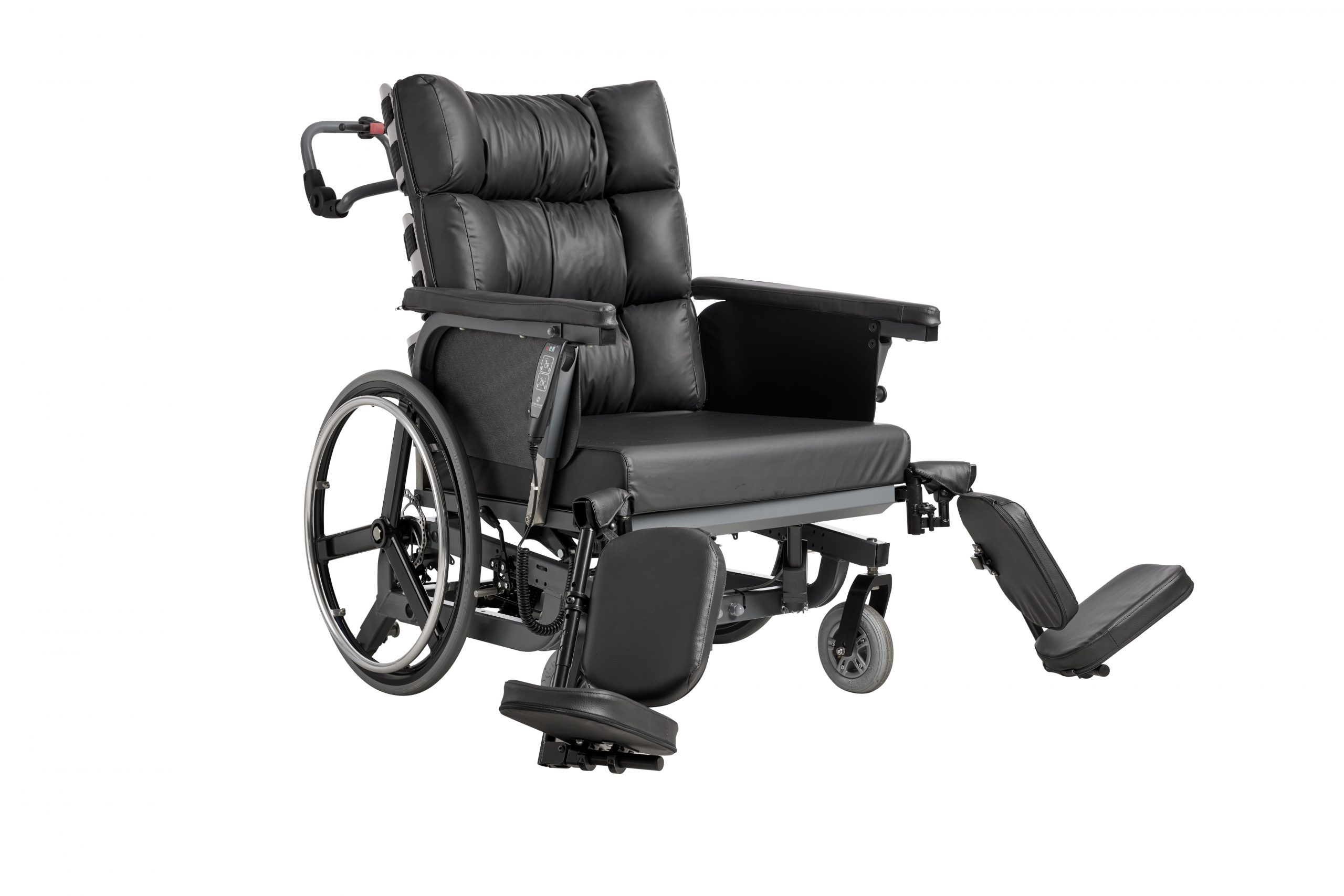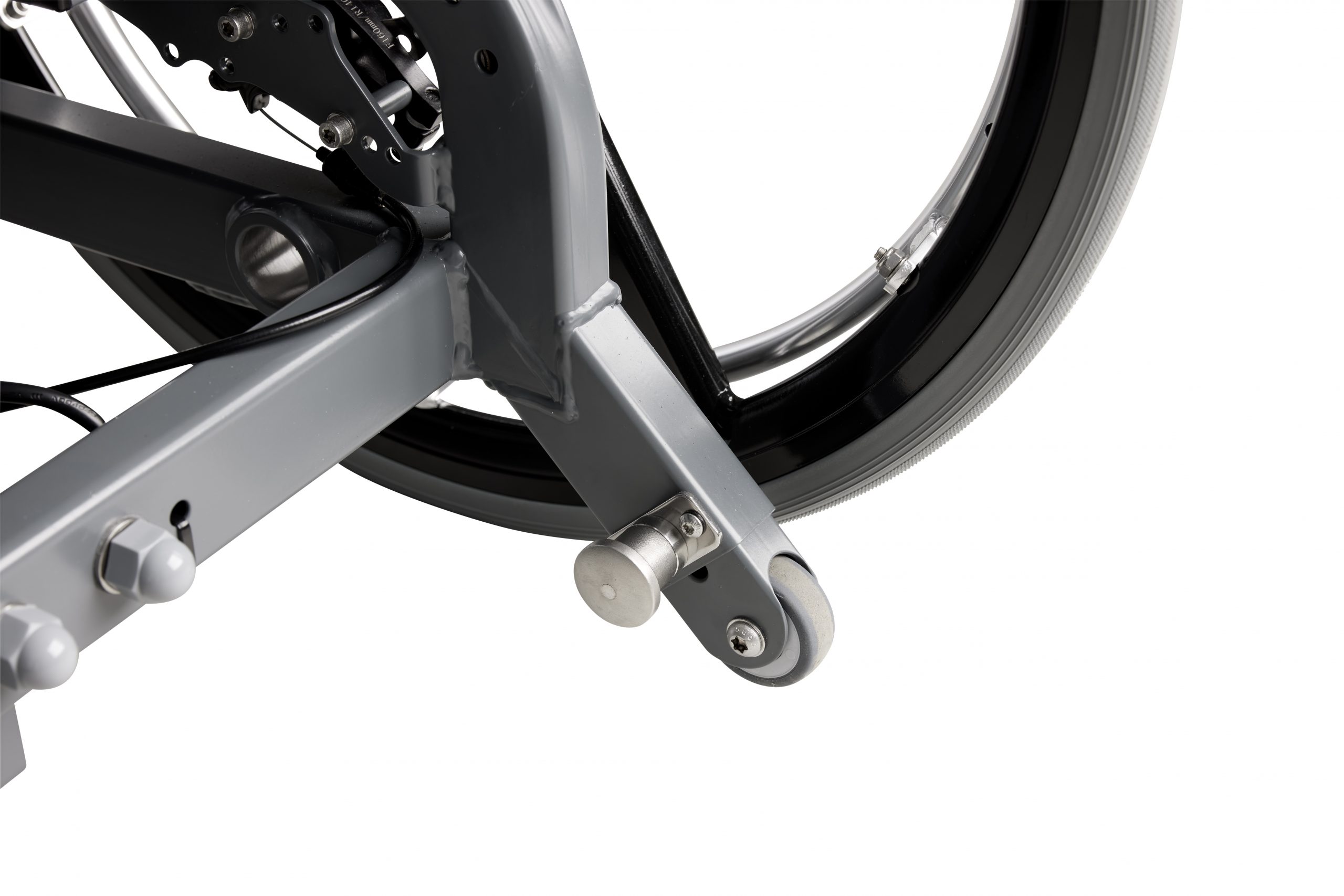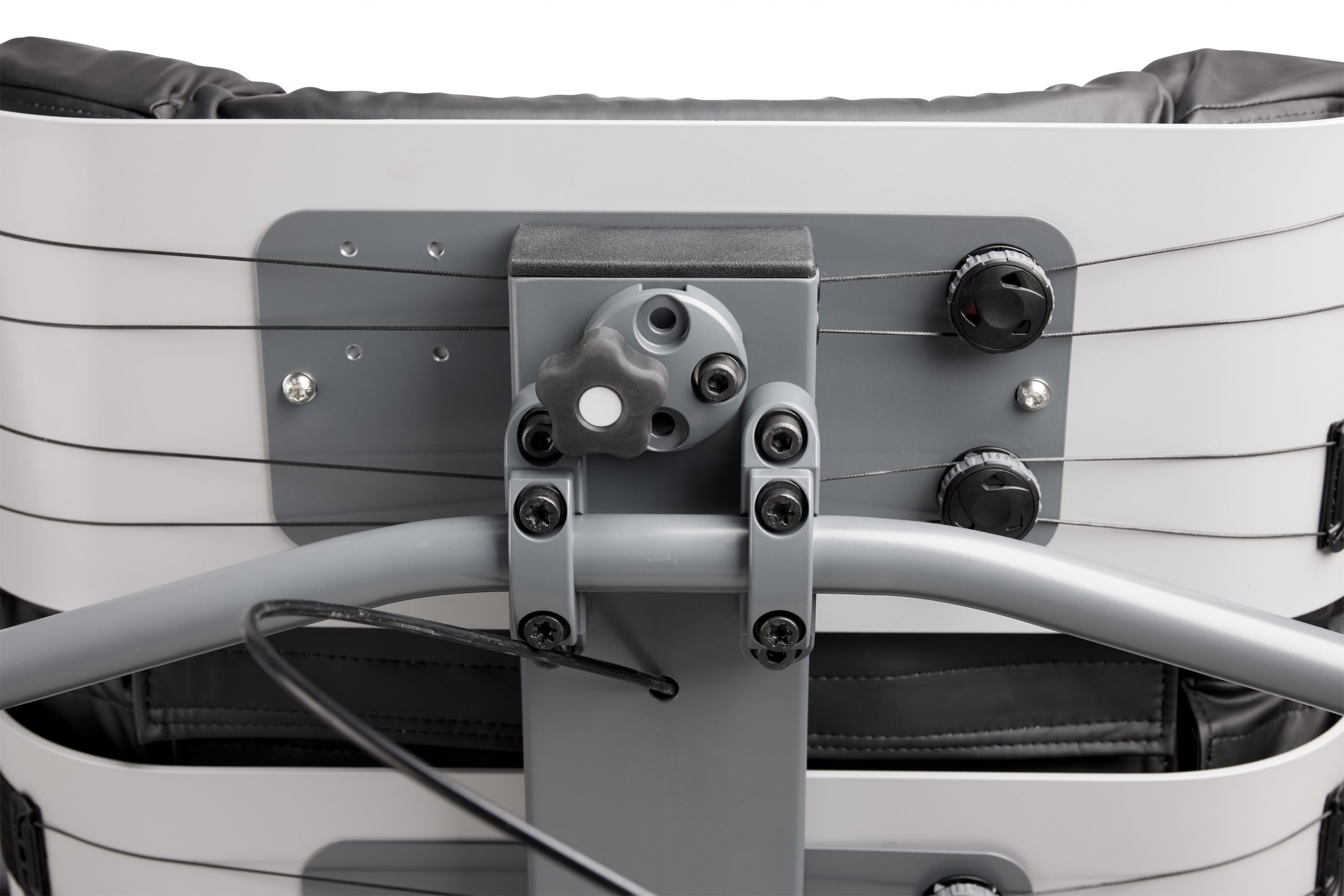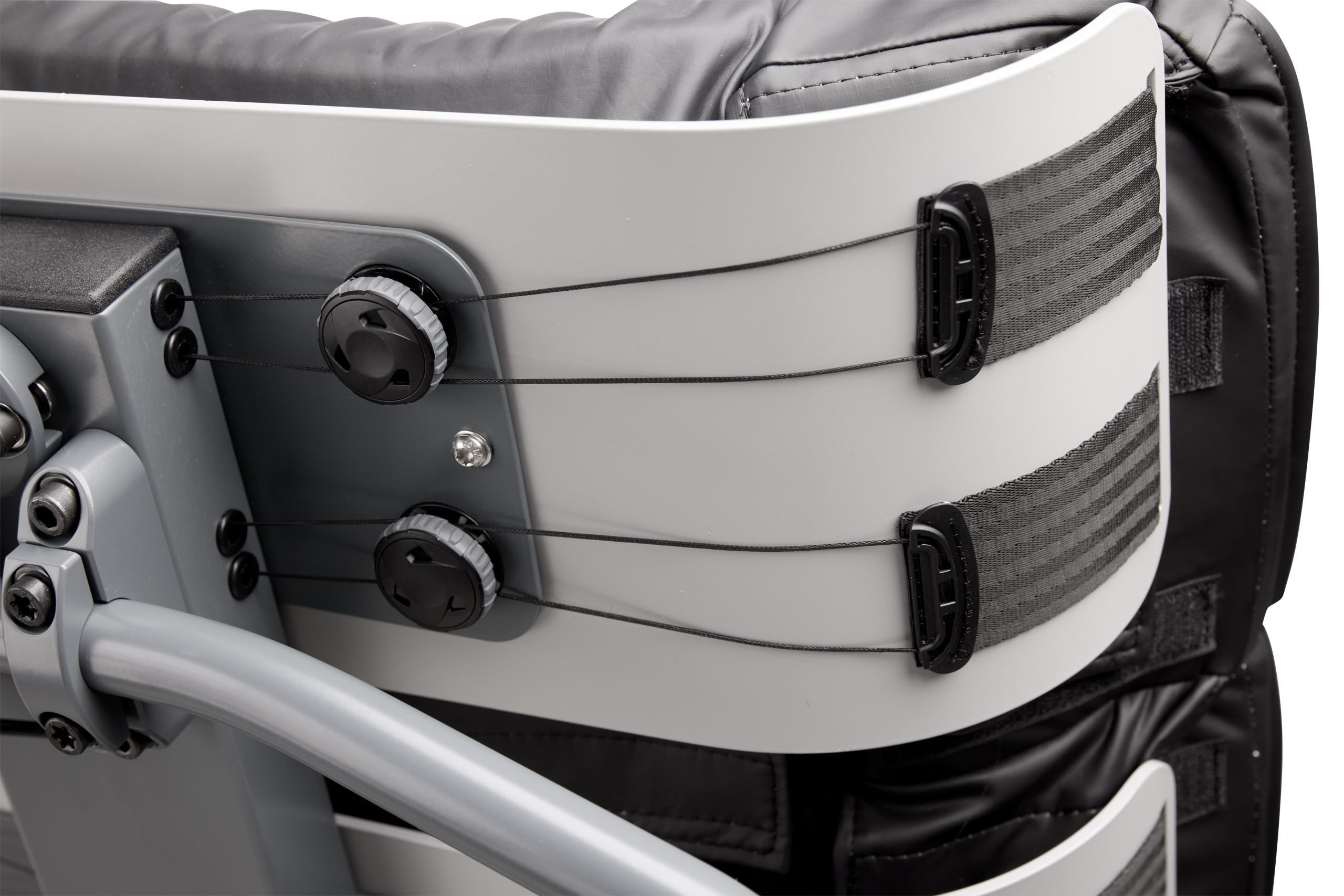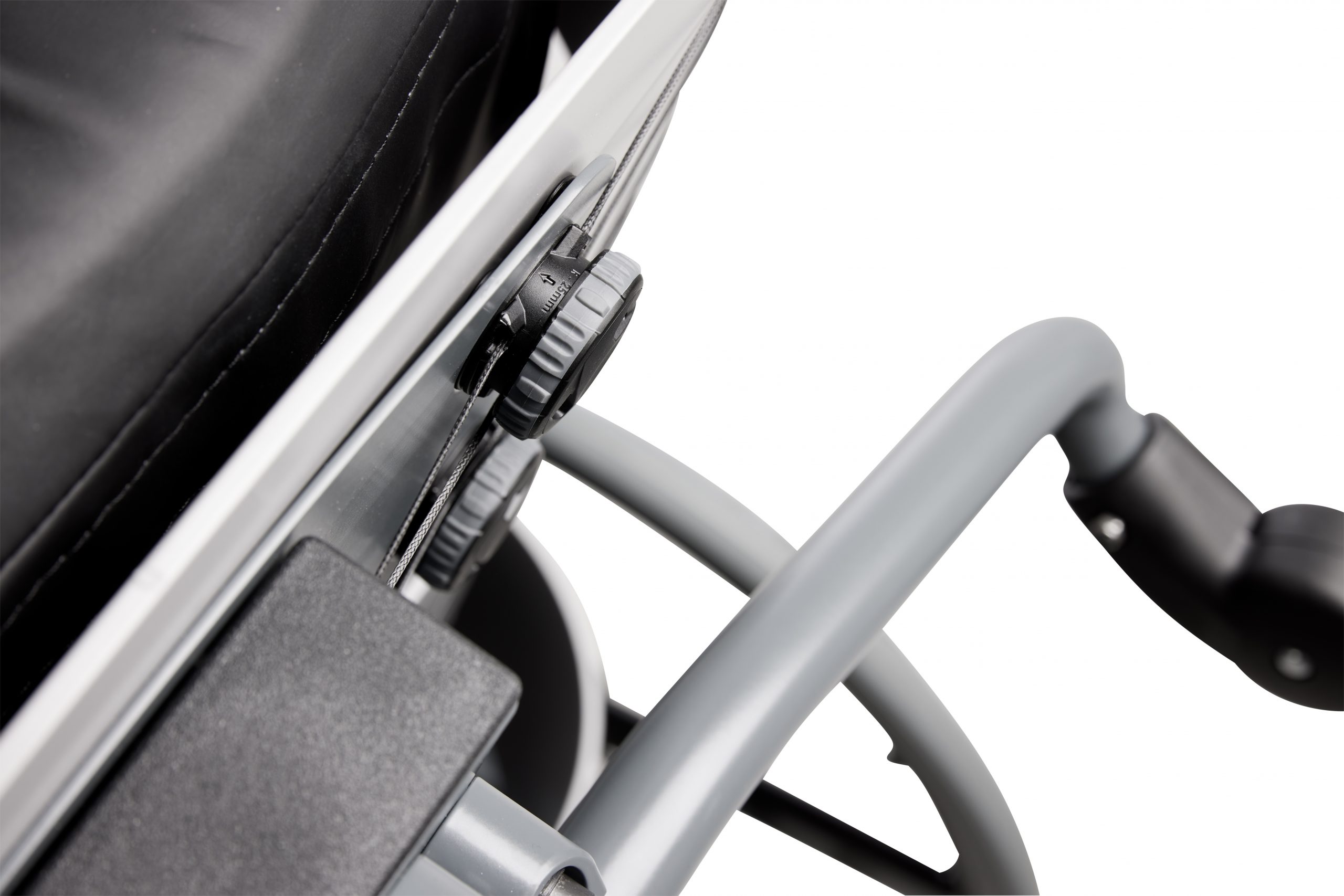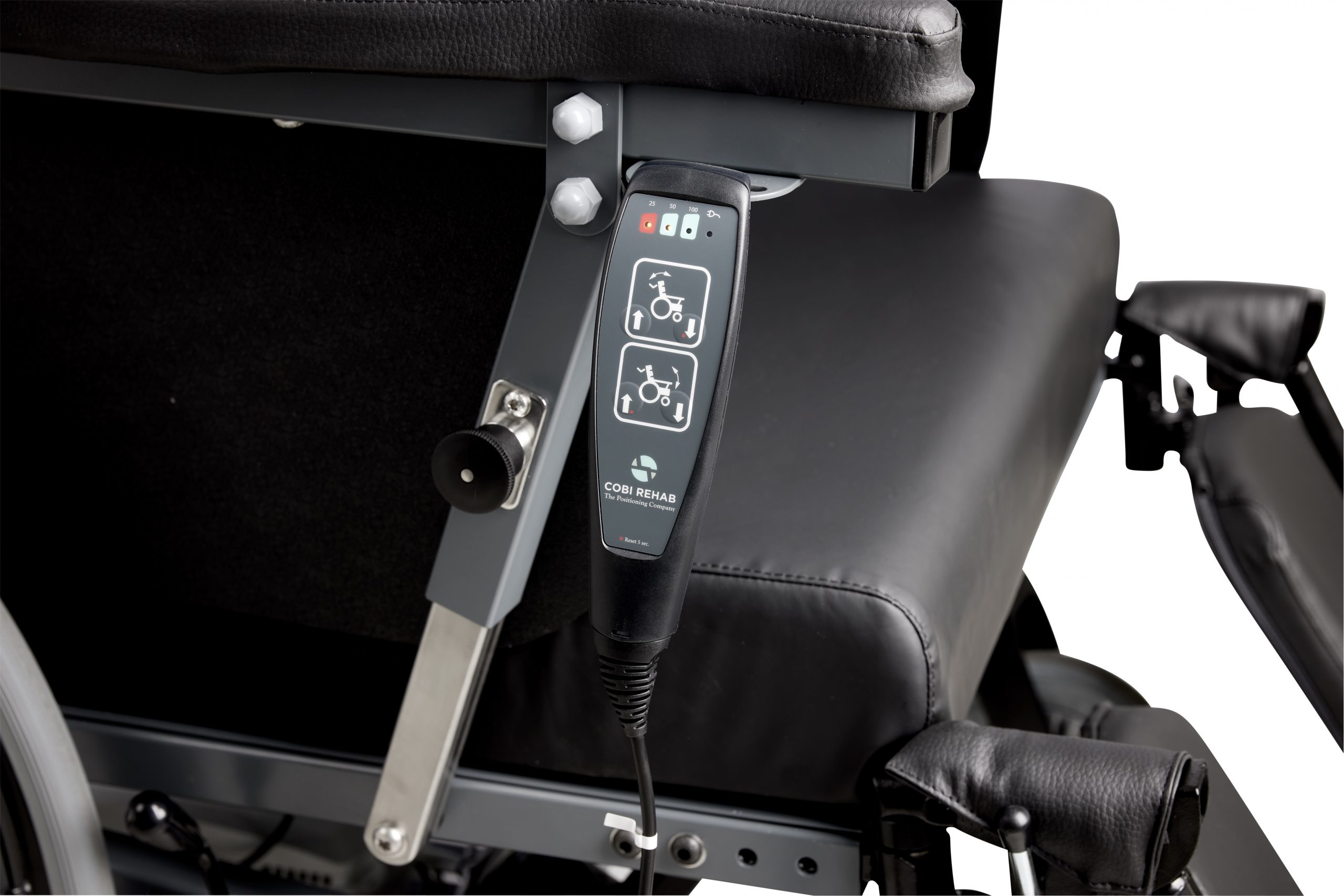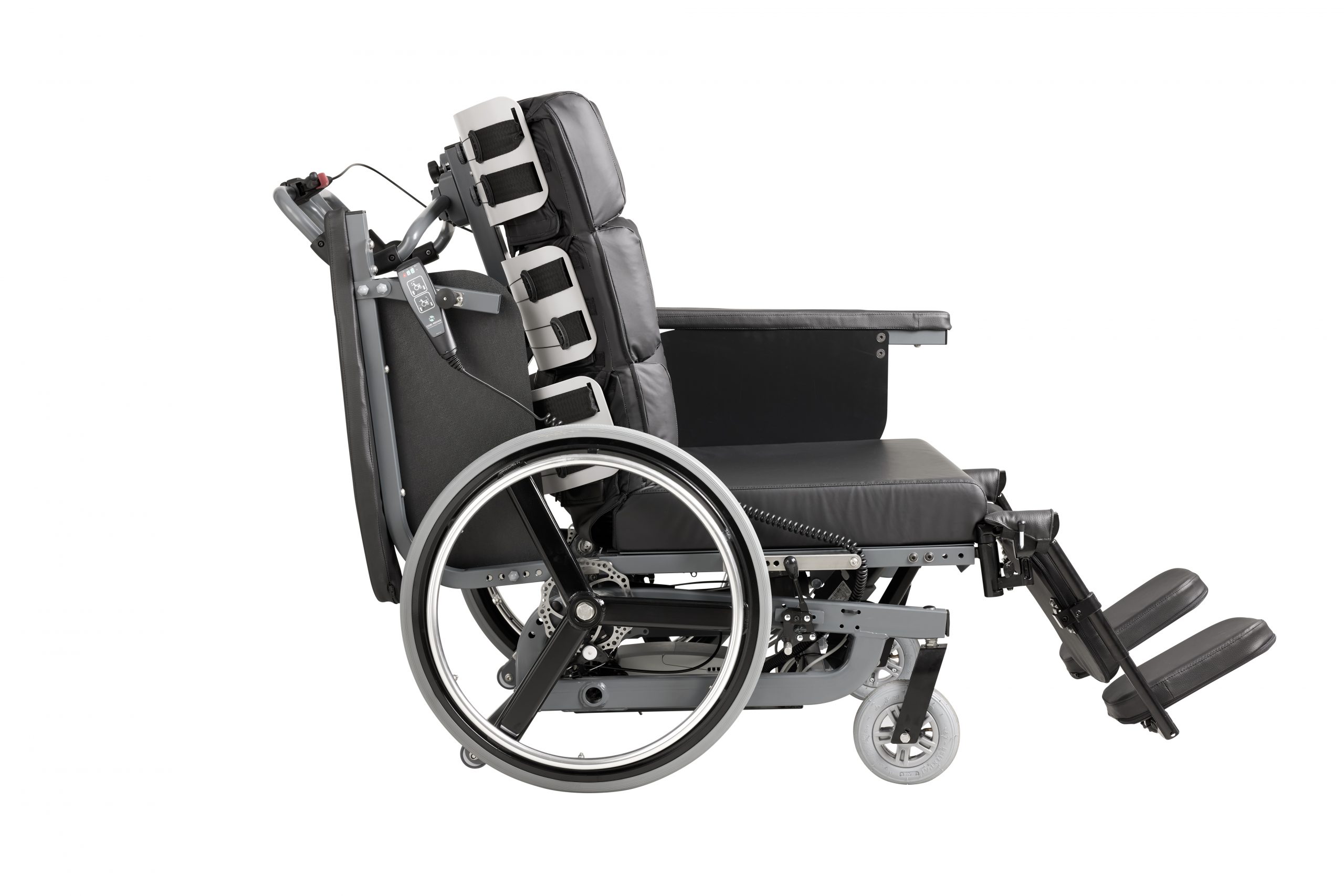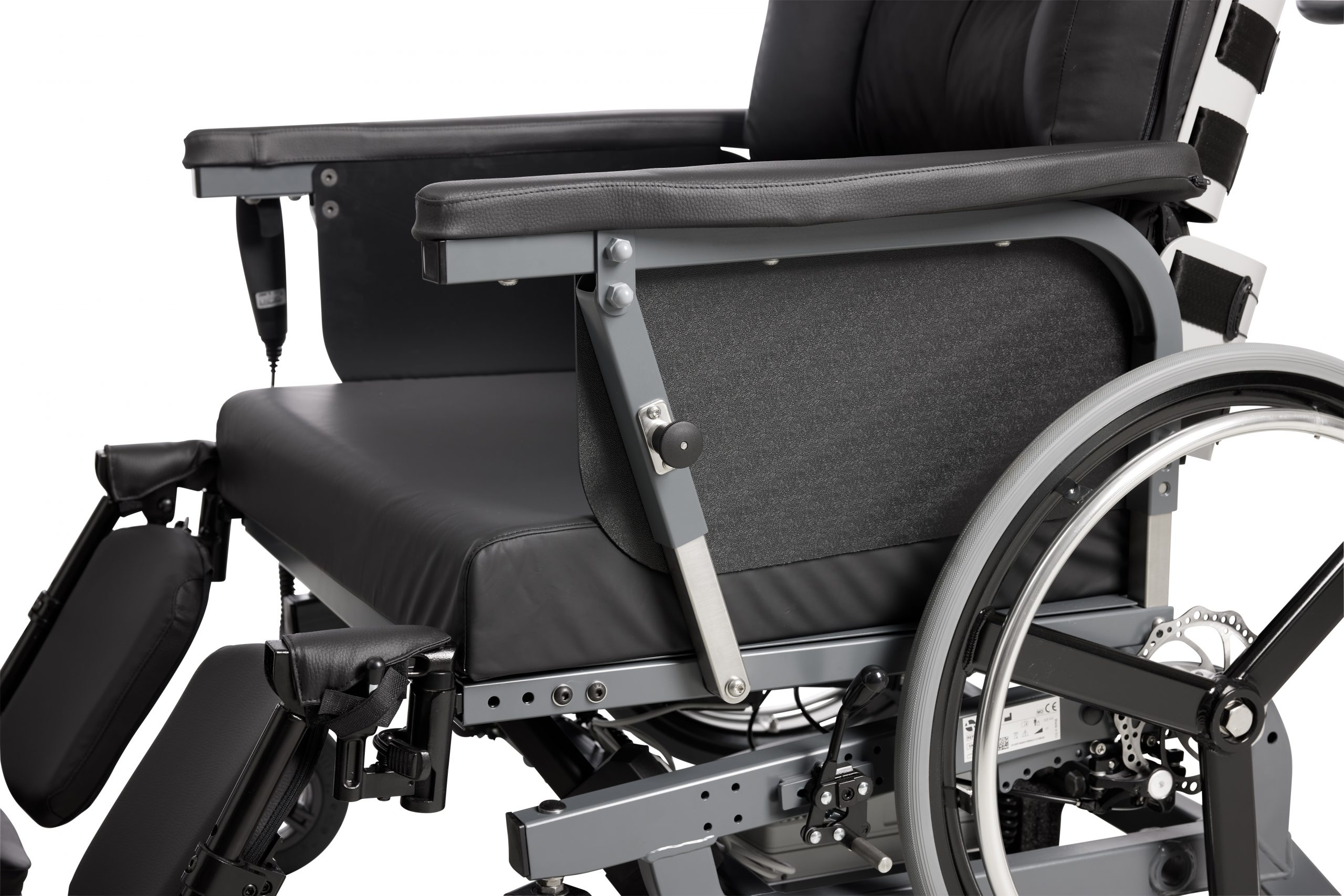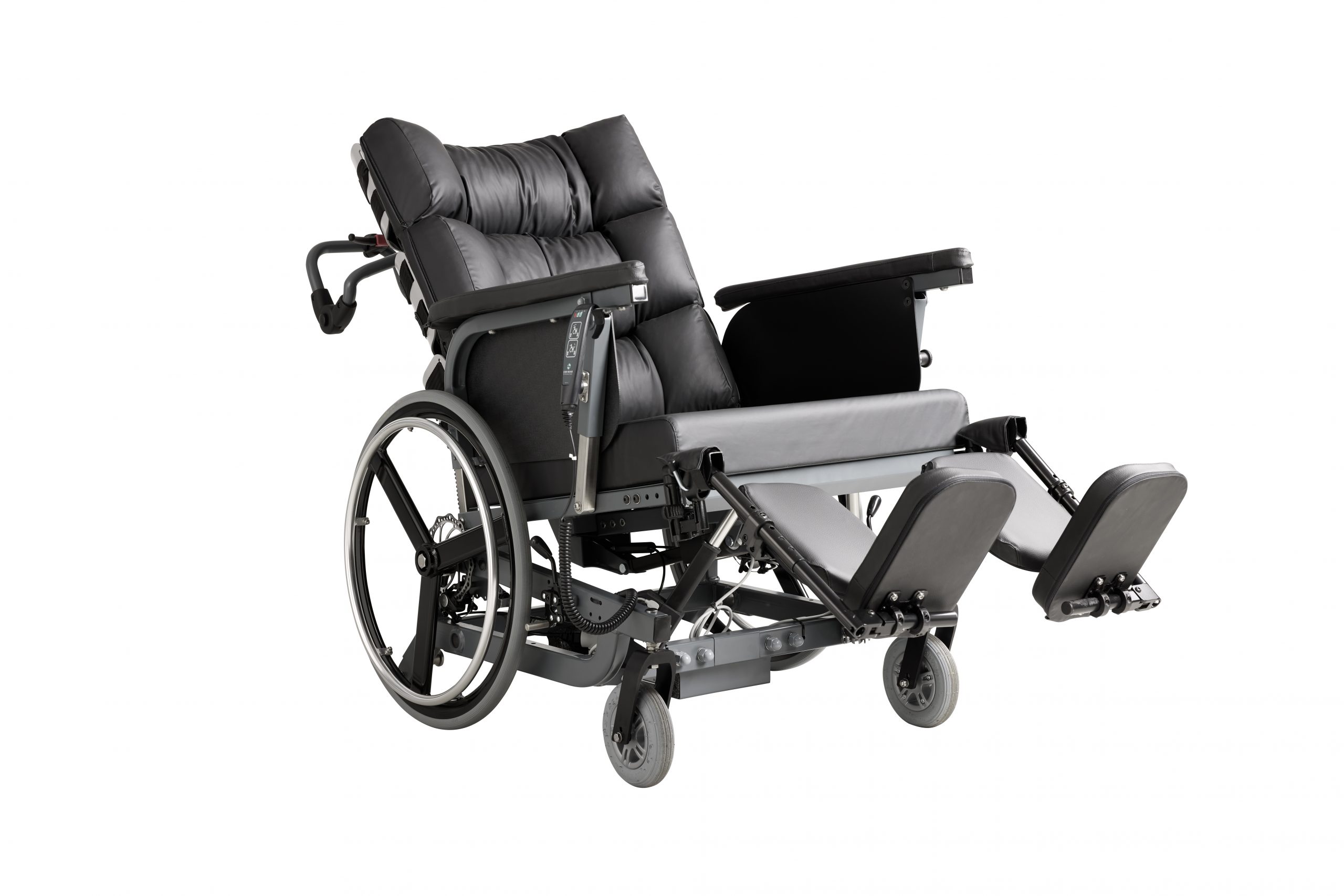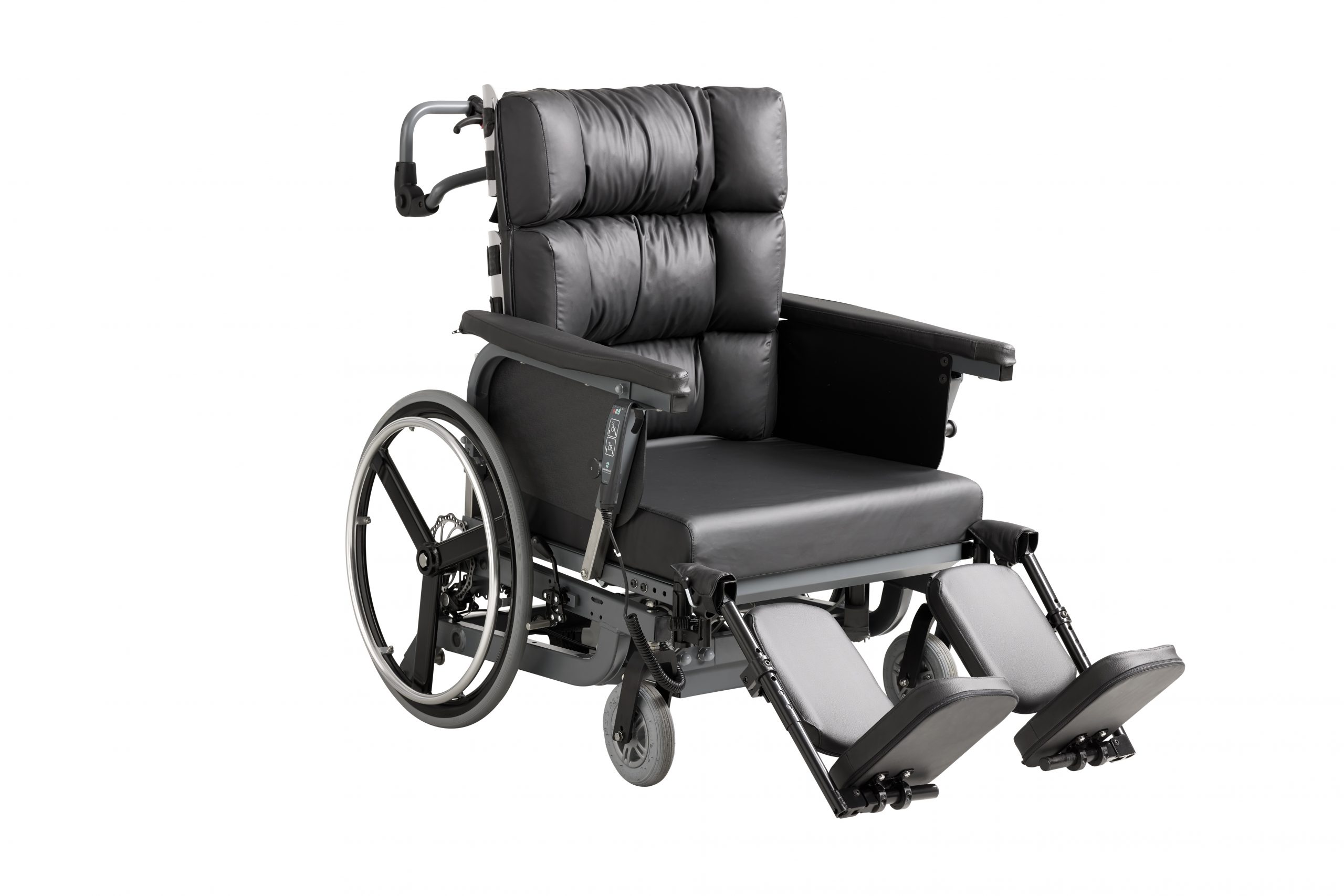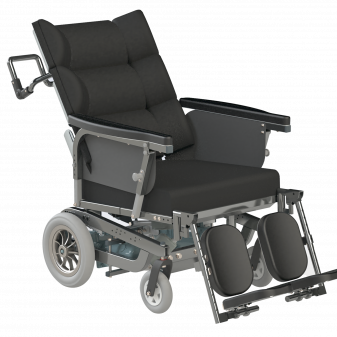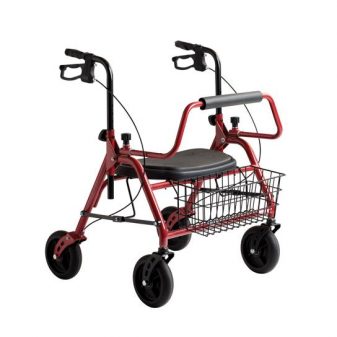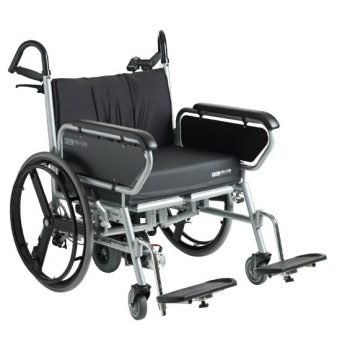Description
Cobi Cruise bariatric comfort wheelchair
Cobi Cruise is a bariatric comfort wheelchair with electric tilt-in-space and recline. It is based on the challenges of a daily routine to improve quality of life for each bariatric user. Therefore, it is tested by Danish bariatric users, thus contributing with valuable suggestions for improvement.
Cruise means freedom. Freedom to move. From bedridden to independent. Cruise also means safety for both user and caregiver. Features like push bar, electric tilt-in-space, and recline considerably reduce the risk of physically overloading the caregiver, while still allowing maximum comfort, mobility, and social life for the user.
Electric tilt-in-space and recline
Negative tilt helps the independent user in safely getting in and out of the wheelchair. Negative tilt means that the front of the seat cushion is lowered. This reduces the access height which, in turn, makes getting in and out easier for the independent user. The function negative tilt is activated using the controller.
Recline provides the apple-shaped user with supported and comfortable seating. When the back of the wheelchair is tilted backwards, the pelvis of the user is automatically opened. This provides improved respiration for apple-shaped users. The recline function (90-120°) is controlled using the same controller as for the electric tilt function (-4-13°).
The seat cushion
The base of the seat cushion consists of hard foam. The core of the seat cushion consists of memory foam specially selected for the target group. The top consists of soft foam. The seat cushion is upholstered with a flame retardant incontinence cover.
Armrests
Extra-long armrests (615 mm) ensure stability and a good grip when the user moves from a standing to a sitting position or vice versa. The armrests can swivel back, making it easier to move the user from e.g. the chair to the bed. The armrests can also be “pushed down” so that the wheelchair can be moved closer to the edge of a table, allowing the user to participate in social activities there.
The armrests are padded for extra comfort. They are also “cup-shaped” thus reducing the risk of pressure ulcers. Each armrest can withstand a maximum load of up to 200 kg.
Push bar
The push bar is flexible and adjustable, using a click system. Major adjustments can be made with tools. The bar has several grip points, depending on whether the chair is to be pushed or manoeuvred.
Leg rests
The leg rests of the wheelchair are an option. The leg rests each support up to 200 kg and are adjustable in both height and position. They also have a swivel function that allows easier access to and from the wheelchair.
The angle of the foot plates, the height/angle of the leg rest and the angle of the calf plates can be adjusted without tools. The flexibility of the leg rests means that the user’s legs can always be supported. This benefits, inter alia, users with a significant tissue on their inner thighs. The leg rests may be removed without the use of tolls without affecting stability.
Construction
Cobi Cruise bariatric comfort wheelchair is constructed from S355 high-tensile steel. The rectangular steel profiles of the chair form the basis for its base frame. The base frame is made up of two mirror-inverted parts (a right and a left part) connected by a centre module. This structure allows the sides to be reused if the width needs changing. The seat frame of the wheelchair consists of 30x30x2 mm high-tensile steel profiles. In addition, the seat frame has a 2 mm steel seat plate attached to it, which helps to distribute the pressure in the best possible way.
The back of the wheelchair consists of a high-tensile steel profile. The profile is positioned centrally on the back of the wheelchair. The angle of the profile means that the back supports both apple-shaped and the pear-shaped users. Three back plates are mounted on the profile. The back plates are curved to hug and support the user from buttocks to neck.
Pear-shaped users with voluminous backsides are ensured good back support, as the design of the “spine” of the wheelchair and its lower back plate provide space for the backside.The upper two back plates ensure that apple-shaped users enjoy stable and comfortable back support. The wheelchair neck support is an option. The wheelchair is supplied with a universal neck support bracket, allowing for the installation of different types of neck support.
The two parking brakes are located on each side of the frame and can be operated by both user and caregivers. The disc brakes are operated by means of a brake lever mounted on the push bar. The brake lever can only be operated by the caregiver.
The Cobi Cruise has three actuators. Two seat actuators and a back actuator. The two seat actuators control the tilt-in-space function. The seat actuators are installed under the seat. The back actuator controls the recline function. The back actuator is also installed under the seat.
Back cushion
The back cushion of the bariatric comfort wheelchair is divided into nine modules, which are sewn together into one large cushion. All nine modules consist of two parts. A firm foam layer and layer with a mixture of polystyrene (Krøyer) beads and latex foam.
The foam layer faces the back of the wheelchair while the bead and foam layer is the one sat on by the user. The bead and foam mixture is modular and helps to increase the comfort of the wheelchair and its pressure relieving effect.
The contents of in each cushion module can be adjusted. This means that, according to professional assessment, the therapist or care staff can add or remove Krøyer beads and latex foam. If necessary, a wedge cushion can also be inserted in one or more modules. The cushion contents are adjusted via the nine zippers located on the back of the cushion.
The modular cushion follows the shape of the back plates and, thus, ensures correct support regardless of user body shape and needs. The modular cushion can be finely adjusted using a patented FitGo system known from ski boots and work shoes. The FitGo system is located on the back plates.
Crash tested in accordance with the ISO 7176-19 standard
Cobi Cruise comfort wheelchair is crash tested which means it can be used in Community Transport vehicles or adapted vehicles for transporting wheelchair users without them being removed from the wheelchair itself. The wheelchair will need to be secured to the vehicle by a Transit Tie Down System (accessory).
Safe transport is a key element in a wheelchair user’s ability to access medical facilities as well as to improve quality of life, by being able to enjoy day trips out and holidays.
Wheelchairs that have been manufactured and suitably tested for secure use within a vehicle are marked clearly on the wheelchair with anchor symbols featured on the frame of the wheelchair. The icon is most commonly displayed on the front frame of the wheelchair. Public transport, taxis and ambulance attendants will look out for either the hook symbols on the back of the chair, or the crash tested sticker.
Maintenance and cleaning
A Cobi Cruise bariatric comfort wheelchair is easy to clean. If the seat needs disinfecting, remove and disinfect it using ethanol 70 – 85% or a chlorine product of min. 1000 ppm and max. 10000 ppm.
Clean the frame, seat and armrests of the wheelchair using water and a regular cleaning agent. The controller can be disinfected using ethanol 70 – 85 % or a chlorine product of min. 1000 ppm and max. 10000 ppm.
See our range of bariatric wheelchairs here. Find the Cobi Cruise comfort wheelchair at the Danish AssistData.
- Used in all phases of rehabilitation, from the bedridden user to the mobile user.
- Cobi Cruise is equipped with tilt-in-space and recline functions which are activated via a controller and operated by both user and care staff.
- Armrests that can be angled and pushed away for e.g. transfers or social activities at a dining table.
- Disinfectable and washable in laundry room at e.g,. a depot or a hospital.
- Fits through most doorways.

